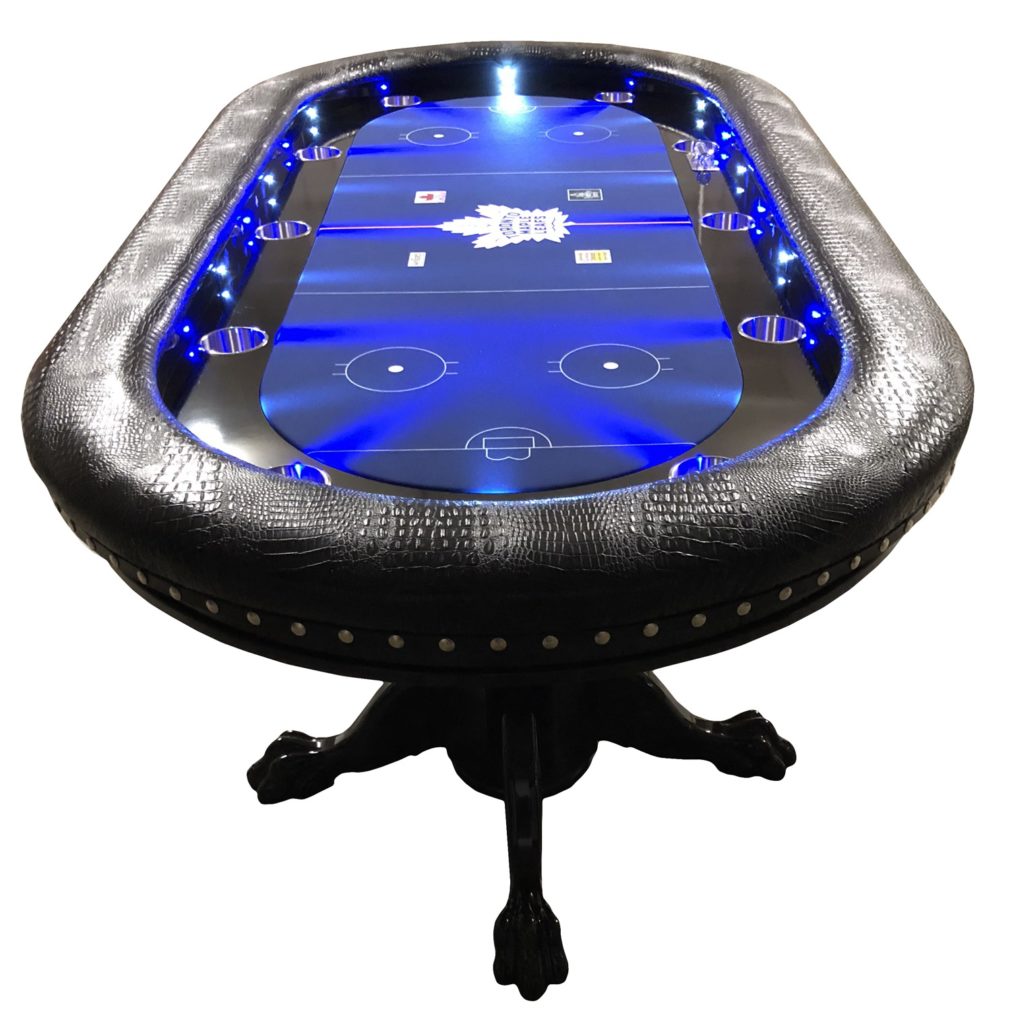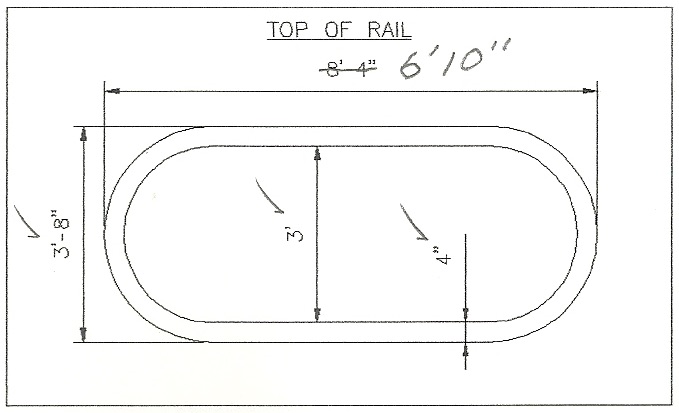Build A Poker Table Topper
The main top is used as a game table and as a base for the poker tabletop. Begin by cutting the main top (H), main cleats (I), and short cleats (O) to size. Sand the parts smooth, and apply self-adhesive birch veneer edge tape to all four edges of the main top. Trim and sand the excess edge tape. You can build your DIY poker table with just some plywood, foam, and felt. But it's not as easy as that; there's more to it. Building your own poker table encompasses a lot, so read this before. Lay a store-bought tabletop for playing cards onto a full sheet of 3/4' plywood. Trace around the perimeter of the top to determine the final dimensions of the game tabletop that you’ll build. To compensate for the trim that will be attached around the edges later on, mark 1-1/2 inches inside the perimeter that you’ve already drawn. Begin by finding the center of the plywood and tapping in a nail. Take a piece of string that’s half the diameter of the octagon poker table you want. Attach one end to the nail and the other to a pencil. Draw a circle on the wood and cut it out with the jigsaw.
A poker table is a necessity in every card player's household. It can fit several people for a fun game of poker, or any other card game. Unfortunately a poker table can be expensive to buy. Luckily, for the average do-it-yourself person, it is easy to build a poker table. A person can build a poker table to accommodate any game room comfortably.
There are couple of basic tools needed to build a poker table. They include a jigsaw, sander, tape measure, cordless drill, spray adhesive, staple gun, sandpaper, wood screws and a speed square. The building supplies needed to build a poker table are two sheets of 4 foot (121.9 cm) by 8 foot (243.8 cm) plywood, several yards of felt, foam and vinyl, and a set of folding table legs. The size of the wood needed is dependent upon the size of the poker table being built.
Start to build a poker table by cutting one of the large pieces of plywood into an oval the shape and size desired. This will be the table top. Lay it over the second piece of plywood and trace it with a carpenters pencil. Cut it out with the jigsaw.
Continue to build a poker table by measuring 5 inches (12.7 cm)into the second piece and cutting another oval. The outer piece will be the railing for the poker table. The smaller inner oval is set aside to add support to the table later on.
Mark 1 inch (2.5 cm) all the way around the large oval that was cut first. Using the cordless drill, make holes around the perimeter of the line and insert the jig saw. Cut around the 1 inch (2.5 cm) perimeter and remove the ring. This will be used for the lower railing.
Use wood screws, fasten the upper and lower railings together and set aside. Secure the small inner oval, that was removed when cutting the upper railing, to the table top using wood screws. Attach the folding table legs to the small oval on the underside of the table top. Flip it back over and smooth out the wood using sand paper or an electric sander.
Cut the foam to the size of the table top and secure with a spray adhesive. Cover the foam and table top in velvet and stretch until tight. Flip the table top over, then staple the velvet to the wood.
Trim two pieces of foam for the side of the railing and one for the top. Spray the railing with spray adhesive, then attach the foam. Cover the top and sides of the railing in the vinyl and pull until it fits snugly. Flip the railing over and staple the vinyl to the bottom of it.
Lay the railing over the table top. It should be perfectly centered and flush with the edge of the table top. Crawl under the poker table and fasten the railing to the table top using bolts.
Step 1 - Materials and Tools
$72 |
$26 |
$21 |
$48 |
$14 |
$16 |
$43 |
$9 |
$3 |
$5 |
$3 |
$5 |
$7 |
$8 |
$5 |
$7 |
$16 |
$306 |
- Circular Saw
- Hand held sander
- Electric Staple Gun
- Plate joiner kit
Step 2 - Cutting for each side of octogan

Step 3 - Cutting edge piece/molding
Step 4 - Gluing up each side of octogan
Step 5 - Cutting each side to correct length and angle
Step 6 - Cutting out for cup holder
Step 7 - Cutting out for chips storage
Step 8 - Dry Assembly

Step 9 - Gluing up final assembly
Step 10 - Cut plywood base
Step 11 - Cutting out for cup-holders in plywood base
Step 12 - Router the top edges
Build A Poker Table Top
Step 13 - Cut out centre octagon
Step 13 - Making the foot of the table.
Step 14 - Making the pedestal

Step 15 - Finishing
Step 16 - Attaching the top pedestal to the plywood base
Step 17 - Cutting & gluing fabric in chip holder cut out
Step 18 - Ready to Play some Poker?
